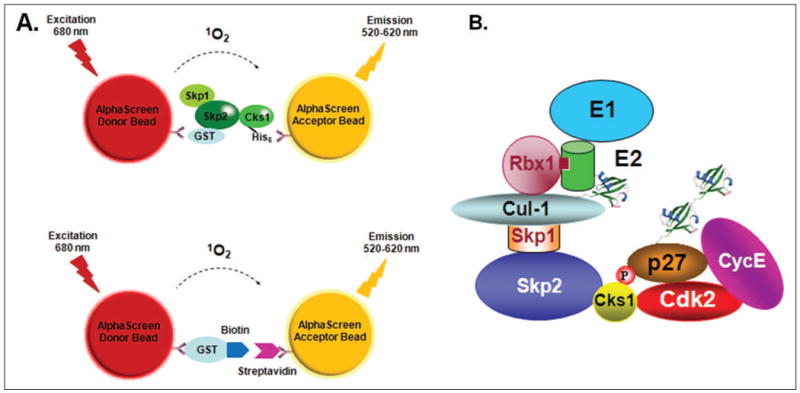Figure 1.

(A) Format of the AlphaScreen assay to detect Skp2-Cks1 interactions. Binding of the glutathione S-transferase (GST)– Skp2/Skp2 complex and His6-tagged Cks1 brings the beads together by immobilization to GST-coated donor beads and nickel-chelated acceptor beads, respectively. When excited at 680 nm, donor beads generate singlet oxygens, which diffuse to the acceptor beads, creating a chemiluminescent reaction that is measured as an AlphaScreen signal. The lower panel shows the format of the counterscreen AlphaScreen assay to eliminate false-positive hits. In this system, donor beads conjugated to a GST-biotin peptide served as a binding partner for streptavidin-conjugated acceptor beads. (B) A schematic of the SCFSkp2-dependent p27 ubiquitination pathway in vitro.
